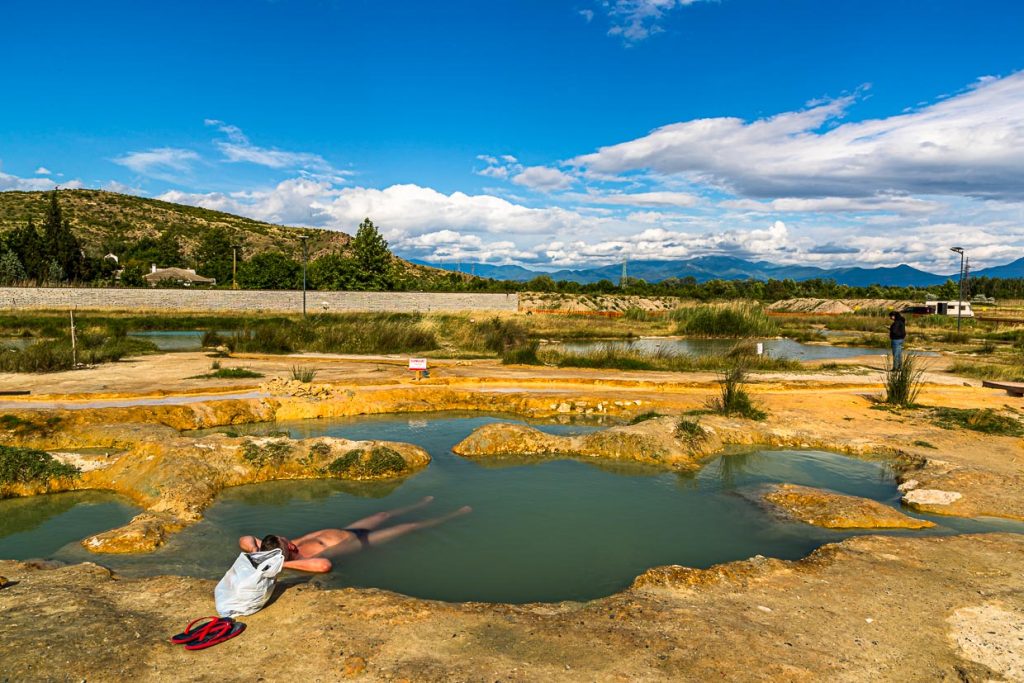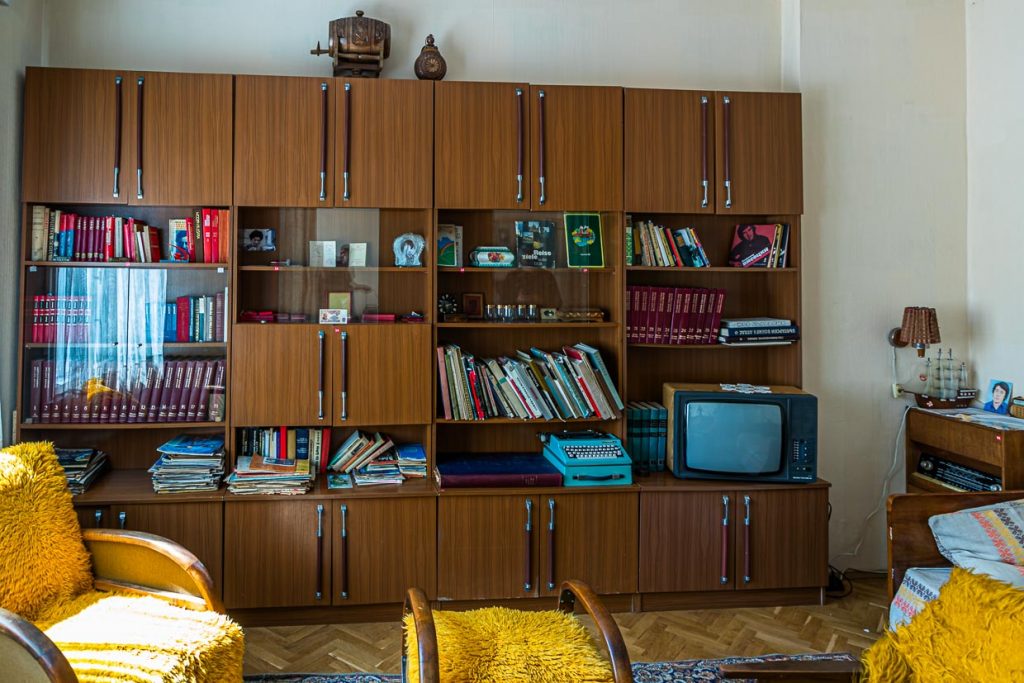In 2002, Bulgarian historian Giorgi Mitrev was rummaging through Roman writings and found the crucial clue in an ancient letter. An inscription points him precisely the way – past vegetable fields and greenhouses – to a hill under which, undiscovered for centuries, rest the remains of Heraclea Sintica, a city in Thracian eastern Macedonia. Founded in the 4th century B.C. by the Macedonian king Phillip II, the father of Alexander the Great, the city still played an important role in the Eastern Roman Empire before it was presumably abandoned in the 7th century A.D. and completely forgotten.

Visitors to Heraclea Sintica do not expect a museum-like overall presentation. Rather, they will witness the excavations, which are progressing slowly. Most of the secrets of the hidden treasures have not yet been unlocked. With simple pulleys, the scientists around Professor Lyudmil Vagalinski pull up small stones, but also marble sculptures and columns from the pits day by day. The foundation walls of a temple of Nemesis and an early Christian basilica can already be seen. By means of ground-penetrating radar, scientists have already located a large workshop where ceramic masks were made for a theater that is also still to be excavated.

Many eras have shaped Bulgaria
Rehashing Bulgaria’s history makes sense for the country in its economically challenging present, but it can’t be done in a rush. Too many epochs have left their mark and make an unbiased approach difficult. From the Thracians to the Greeks and Ottomans, during Christianity and in the age of communism. Again and again, the focus on one’s own history has fundamentally changed. It is also worth remembering that Bulgaria sided with Germany during the Second World War.

The gold of the Thracians
The National Museum in Sofia is proud of its collection of the oldest gold treasure in the world. In ancient times and even before the Macedonians under Alexander the Great briefly expanded their empire to the east, the Thracians immortalized themselves in history through their love of wine and gold. The past comes alive especially with narrated stories. Thus, in the National History Museum, we learn the story of the peasant woman who, in 2003, received from her husband a golden necklace that he had made for her from pieces of gold lying around in his field. Just like the Thracian women, she had always felt particularly safe wearing her gold jewelry. The only bad luck was that archaeologists became aware of it and after further investigation found a 2,400 year old treasure with over 15,000 gold objects.



The pyramids and the wine of Melnik
The tri-border area where Bulgaria borders Macedonia and Greece has been known as a wine-growing region since pre-Hellenistic antiquity. Orpheus, whom the Greeks revere as the inventor of music, is said to have lived here. Almost every family in the small town of Melnik cultivates some vines and offers their homemade wine for sale along with all sorts of souvenirs.

Some demanding winegrowers have been cultivating the autochthonous vine Shiroka Melnishka Losa in this region again since 2012. Presumably, the Thracians already drank wine from the broad-leaved vine, which is native only here, and its survival was severely threatened. Estate owner Nikola Zikatanov emphasizes in conversation that his family business had to make a virtue out of necessity a few years ago. “Since Bulgarian harvesters have been able to earn more in European strawberry fields, we’ve been saying goodbye to the bulk business.” In fact, he was allowed to note that the wine gains in quality by harvesting only the really ripe grapes every day. “And we manage to do that when there are only three of us in the vineyard.”

Aleksander Skorchev also has a lot of plans in the Struma Valley. The sommelier has worked in Gordon Ramsey ‘s restaurant in London and has been developing high-quality wines on the newly planted sites of the Zornitza family estate since 2017. So far, the scale of production volumes can be called experimental at best. In 2021, he expects to bottle his three cuvées at a total of 10,000 bottles. Grapes from Merlot, Cabernet Sauvignon, Grenache, as well as Bulgarian Ruby vines are pressed here without pressing, fermented, and then aged in oak barrels for a maximum of eight months.

But the geology of southern Bulgaria has more to offer besides the striking pyramids, whose limestone sandstone you can almost watch weathering.

Bulgaria is richly blessed with hot springs
Not far from the extinct volcano Kozhuh lie not only the excavation site of Heraclea Sintica and the memorial to Baba Vanga, who worked here until 1996 and was known far beyond the borders of Bulgaria as a miracle healer. She was even a state employee at the Institute of Suggestology, at the Bulgarian Academy of Sciences since 1967.

An insider tip for outdoor enthusiasts can be found on the backside of the extinct volcano Kozhuh. Few mobile homes are parked in an open field and nearby, water of varying temperatures steams in clay pools under the open sky.


Different perspectives on Bulgaria’s history
The historical development on the territory of today’s Bulgaria can only be understood against the background of the influence of various great powers. After the epochs of the Thracians and the Greeks, Bulgaria belonged for 500 years to the Ottoman Empire, which was ruled from today’s Istanbul. Few of us associate formative cultural media, such as the Cyrillic script, with its Bulgarian origins.

During the Ottoman rule, there has been neither a Renaissance nor an Enlightenment in Bulgaria as in the rest of Europe. Instead, one usually hears the term National Revival in Bulgaria, referring mainly to the separation from outside influences, such as Greek culture and the Ottoman state system.
The Bulgarian Enlightenment and the Rila Monastery
The Rila Monastery was founded in the 10th century and named after the first Bulgarian hermit, Ican Rilski, who inhabited a cave nearby until his death in 946. During the Bulgarian Revival in the 18th and 19th centuries, the monastery was a center of spiritual and cultural life. Since 1983 it has been a UNESCO World Heritage Site.

Wall calendar with photos by Georg Berg available in bookstores (also online) in various sizes: Rila Monastery – World Heritage Site in Bulgaria (*)
The project “The Red Flat” in Sofia is living contemporary history
The reappraisal of the time when Bulgaria was politically part of the Eastern Bloc has not yet been reflected in the country’s major museums. All the more remarkable is the private initiative of a few young people who rented a city apartment in Sofia in April 2019 and furnished it with objects collected and donated by acquaintances. Not only foreign Torurists, but also young Bulgarians are enthusiastic about taking themselves back to the time of Reagan and Gorbakhov.

Guided tours can be booked right next door in a store that also offers other unconventional tourist projects for Bulgaria.

In the apartment The Red Flat nothing reminds of a museum. All the furniture may and even should be used. Books and records are available as original documents. Even a classic Bulgarian soft drink is in the fridge. Neon colors glow in the water glass and the sweet taste awakens many memories for Bulgarians who still experienced the cold war, which can be exchanged in the living room.

Bulgaria is an insider tip
Bulgaria is an exciting country with a lot to discover. The cost of living is based on the Bulgarian income and is comparatively cheap. Who would like to go on discovery journey, may avoid therefore confidently the well-known centers of the mass tourism at the black sea.
The research trip was supported by the Bulgarian Ministry of Tourism.
(*) This post contains advertising links (also called affiliate or commission links) that lead to Amazon.de.

